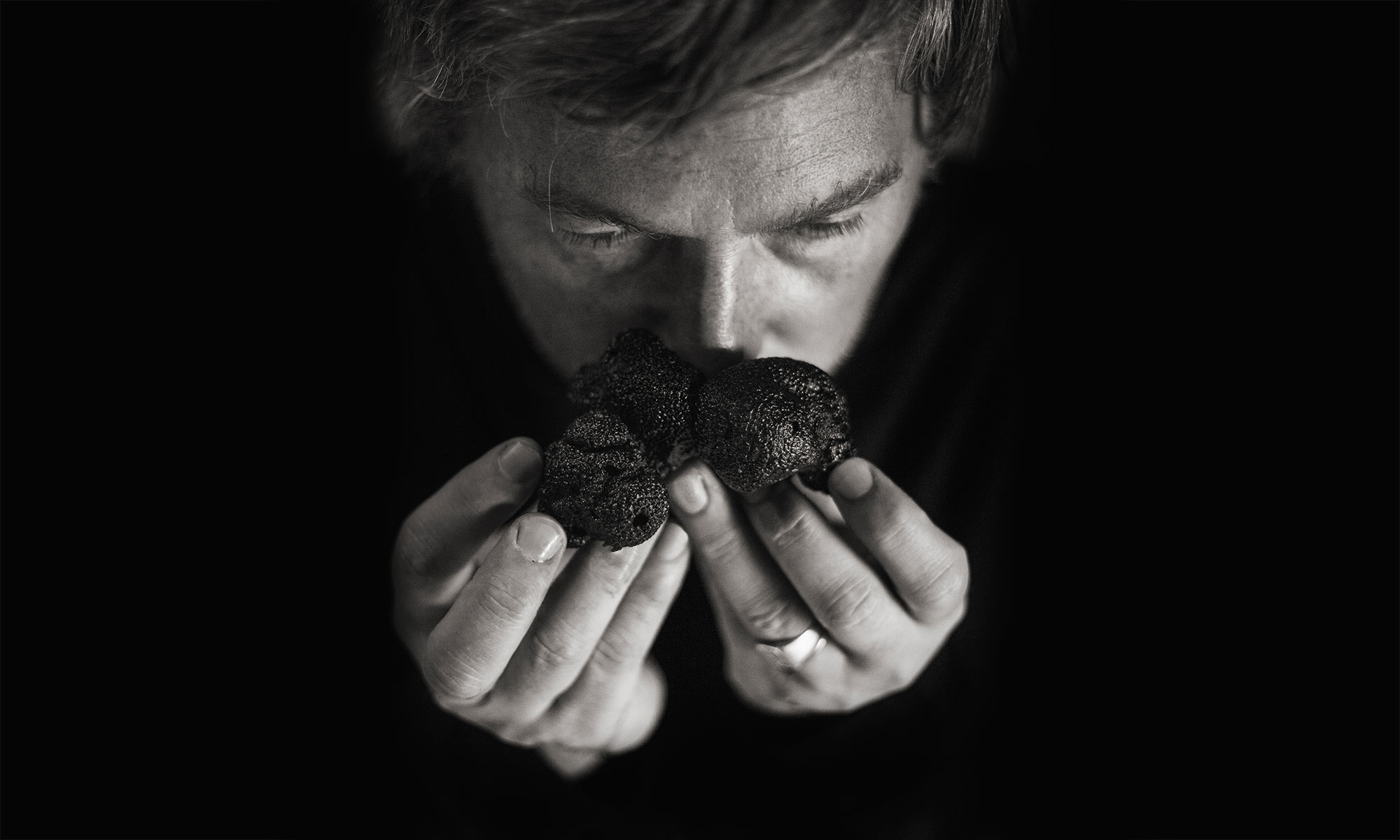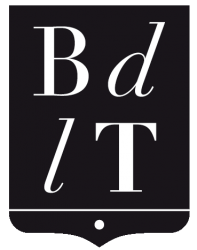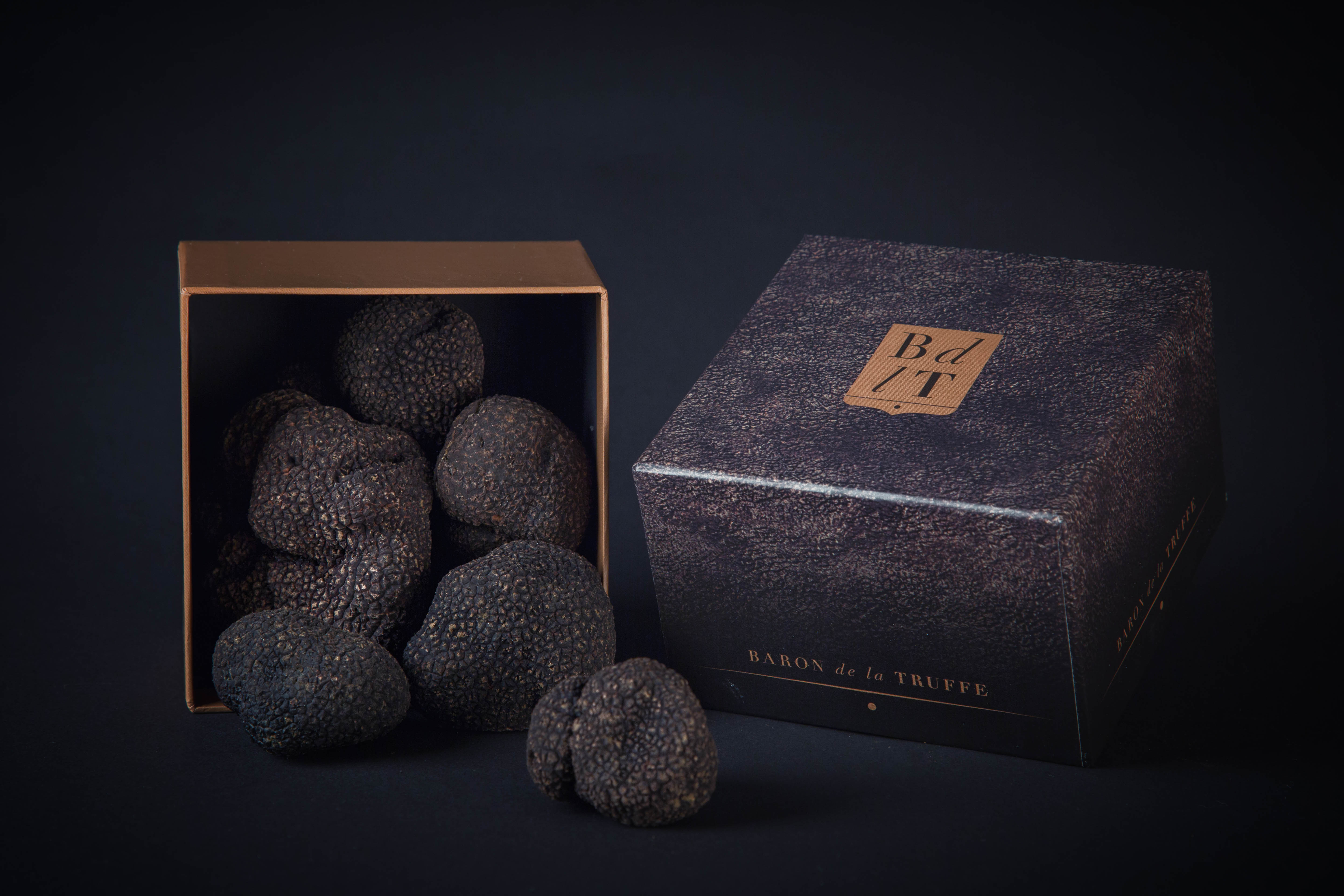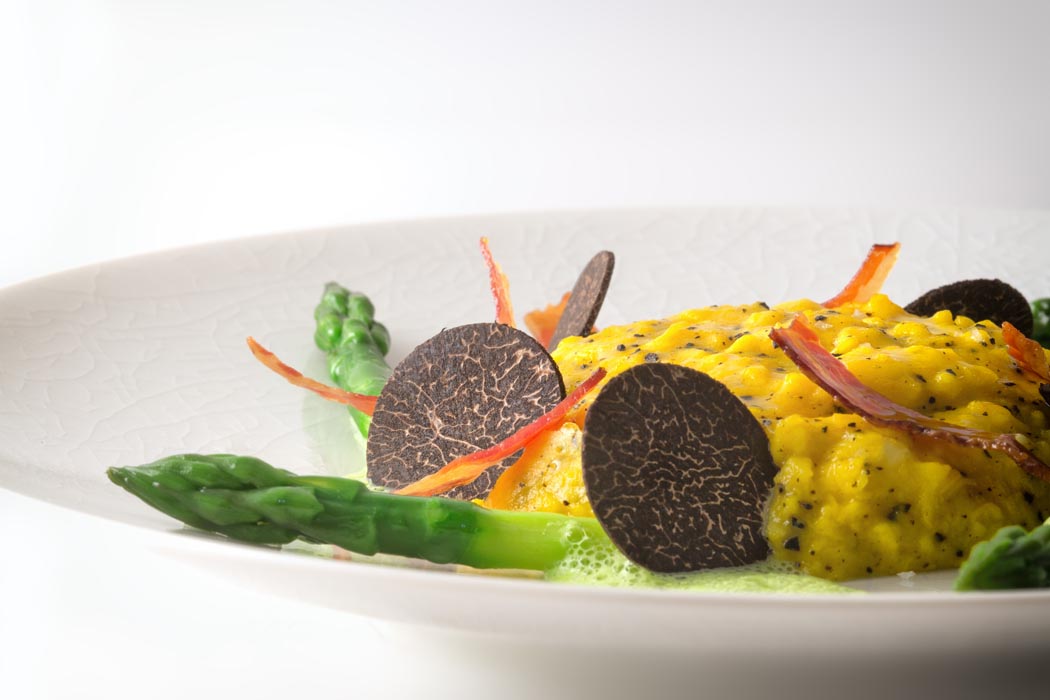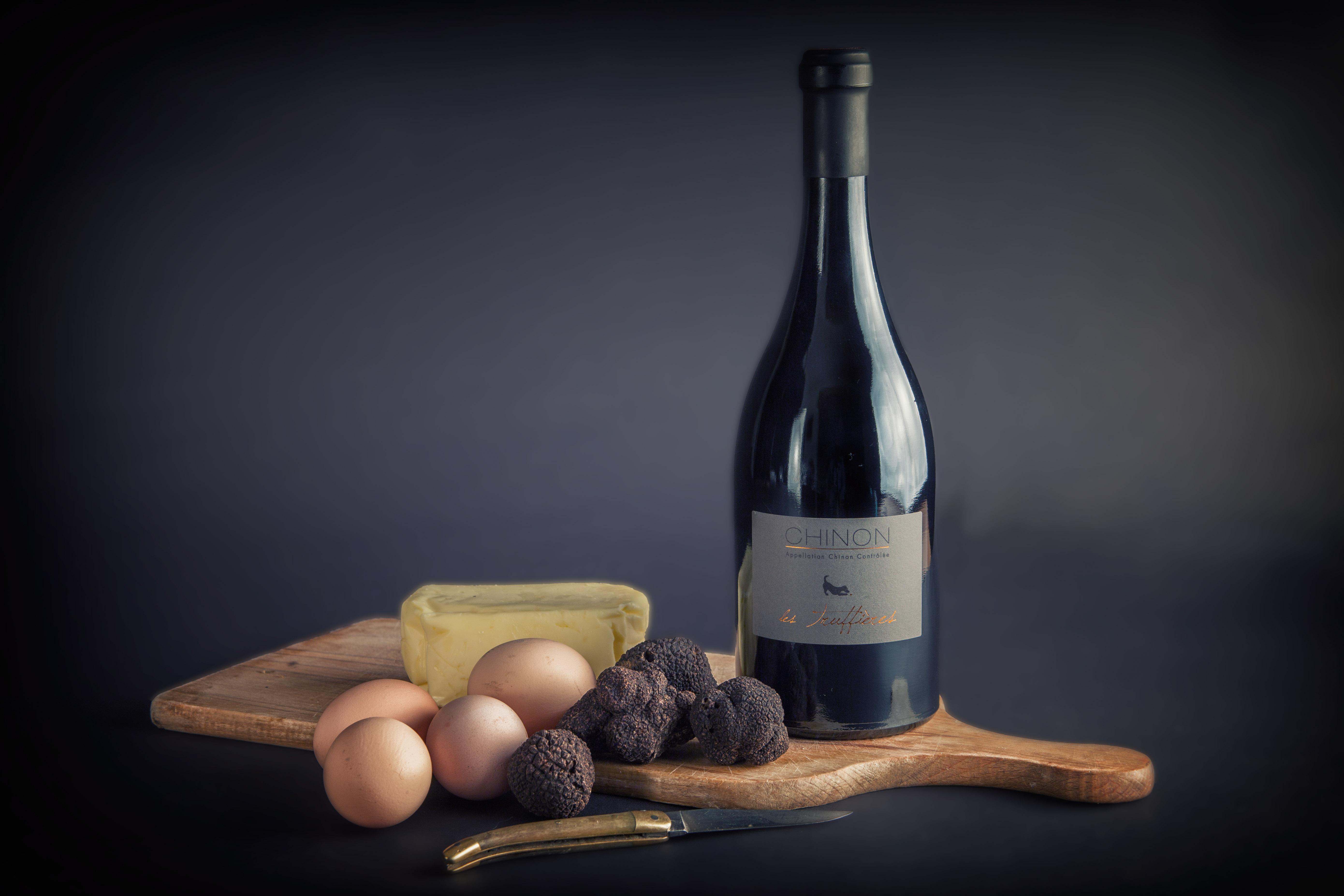Tuber mélanosporum : what’s that?
The truffle is an underground edible fungus associated with a host tree (oak, hazel, lime, hornbeam, etc.); we talk of a partnership or symbiosis between tree and fungus.
Today there are 27 different species of truffles. Let me introduce you to five varieties:
Tuber Melanosporum
This is the queen variety that I mostly cultivate. It is also called “Melano” or “black Périgord truffle”. It grows only in limestone soils at a depth of 1 to 30 cm. It is born in spring and starts to grow from mid-August onwards, but doesn’t become mature until about December, peaking in mid-January.
Tuber Brumale
A cousin of Melano, this truffle is harvested during the same period. Its white veins are coarser and its peridium (skin) tends to flake easily. The musky scent of this truffle makes it great for cooking, but it’s very different from Melano.
Tuber Magnatum Pico
Known as the white Alba truffle, this is the most popular truffle in Italy. Harvested in the undergrowth in September, this truffle with its strong alliaceous taste and smooth, ochre-tinted skin is very different from the ones found in France. Science now allows us to hope that we can produce it in Touraine. We’ll definitely let you know as soon as we harvest our first lot!
Tuber Aestivum/Uncinatum
Science has spoken: although these two truffles are considered to be different, they actually have the same DNA. What separates them is the harvesting period. The first is harvested from May to August. Its gleba (flesh) starts out white and its peridium, black. Come September, its flesh starts turning brownish, and by December it is almost chocolate in colour. Its nutty scent is distinctive, although milder as compared to other truffles.
Tuber Mesentericum
The people of Lorraine love them, but Parisians often malign them. It’s true that when fresh, this truffle gives off a strong smell of petrol. But this is the only truffle that stands up well during cooking, making way for green almond flavors. This is THE truffle to be used in foie gras. It is harvested from September to December.
A delicious simplicity
Truffle is a product that’s easy to cook and you’ll need very little of it to sublimate even the most “ordinary” dish. There’s no need to seek out sophistication, it marries exquisitely with the simplest foods.
A shaving of truffle over steaming eggs (scrambled, omelette, boiled), pasta, mashed potatoes or a cheese soufflé will be enough to delight your guests.
 One of the secrets of truffle lovers is capturing its aroma. Storing fresh eggs with a piece of truffle in a box inside the fridge, will automatically transfer the scent of the truffle to the eggs: truffles are also known to be generous!
One of the secrets of truffle lovers is capturing its aroma. Storing fresh eggs with a piece of truffle in a box inside the fridge, will automatically transfer the scent of the truffle to the eggs: truffles are also known to be generous!
Tip: remember to regularly open the box in which the eggs and truffles are stored, to let in fresh air.
The perfect match: the “Les Truffières” vintage
This vintage, which is the result of our collaboration with talented wine-grower, Philippe Brocourt, is the ideal accompaniment to your truffle recipes*. This rich wine with powerful tannins, which is from the same clay-limestone soil as our truffles, is produced in the highlands of Ligré, in the historic centre of the Chinon district.
It unveils subtle flavours of roasted nuts, underbrush and red berries, which are unique to Cabernet Franc. Accompanied by truffles, good meat or a cheese, this wine will reveal its potency and aromas.
Feel free to contact us for any order or information.
*Alcohol abuse is dangerous for health: consume with moderation.
